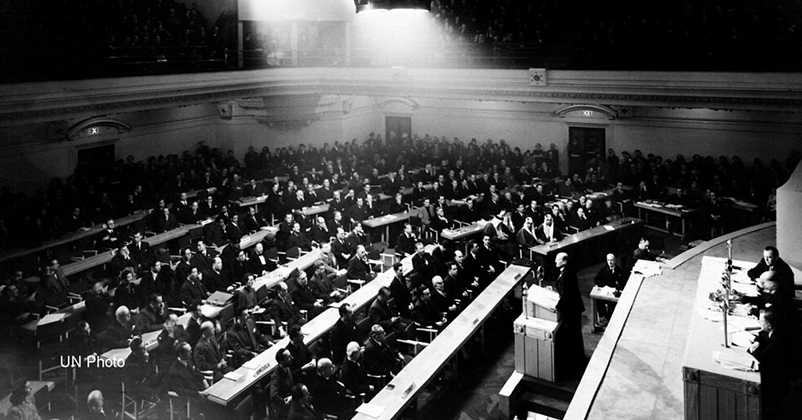10 January 1946: " The Birth of the United Nations: A Look at the First Session Of General Assembly"
Total Views |

The first session of the United Nations General Assembly took place in 1946, marking the beginning of a new era in international diplomacy.
Here is a detailed overview of this historic event:
Date and Location: The first session of the United Nations General Assembly was held from January 10 to February 14, 1946, at the Methodist Central Hall in London, United Kingdom. The choice of London as the venue was primarily due to the logistical challenges faced by the United Nations in establishing its headquarters in New York City.
Participants: The session was attended by representatives from 51 member states of the United Nations, including major world powers such as the United States, the Soviet Union, the United Kingdom, China, and France. Each member state was represented by a delegation led by its head of state or government, or a senior diplomat.
Agenda: The main agenda of the first session of the General Assembly was to discuss and adopt the rules and procedures for the functioning of the United Nations. The session also aimed to address pressing global issues, including the establishment of the United Nations Security Council and the Economic and Social Council.
Key Decisions and Resolutions: During the session, several important decisions and resolutions were made. Some of the notable ones include:
1. Election of the President: The General Assembly elected Dr. Oswaldo Aranha of Brazil as its first President. He played a crucial role in guiding the proceedings and setting the tone for future General Assembly sessions.
2. Establishment of the Security Council: The General Assembly adopted Resolution 1, which established the United Nations Security Council as the primary body responsible for maintaining international peace and security. The resolution outlined the composition, powers, and voting procedures of the Security Council.
3. Creation of the Economic and Social Council: The General Assembly adopted Resolution 9, which established the Economic and Social Council (ECOSOC). ECOSOC was tasked with addressing economic, social, and cultural issues and coordinating the work of specialized agencies and functional comm
issions of the United Nations.
issions of the United Nations.
4. Admission of New Members: The General Assembly considered and approved the applications for membership from several countries, including Australia, Egypt, India, and Syria, expanding the United Nations' membership.
5. Adoption of the Rules of Procedure: The General Assembly adopted its rules of procedure, which outlined the conduct of meetings, voting procedures, and decision-making mechanisms.
Impact and Legacy: The first session of the United Nations General Assembly laid the foundation for the functioning and structure of the United Nations. It established key organs such as the Security Council and ECOSOC, which continue to play vital roles in addressing global challenges. The session also emphasized the importance of multilateralism and international cooperation in maintaining peace and promoting development.
Overall, the first session of the United Nations General Assembly marked a significant milestone in international diplomacy, setting the stage for future deliberations and actions by the global community through the United Nations.

